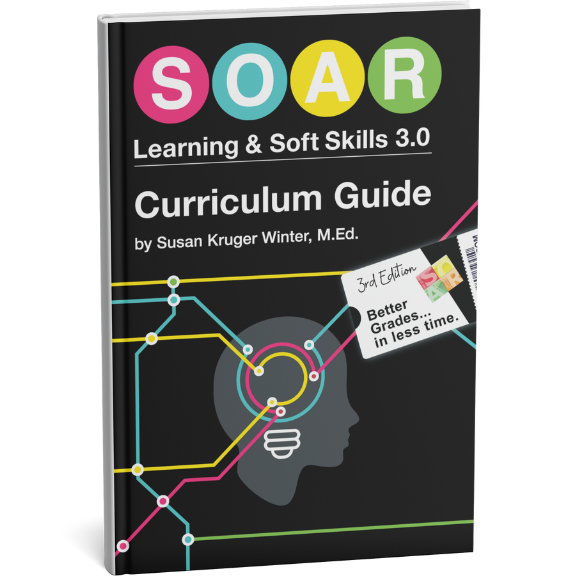Grading: The Most Motivating Solution…EVER!
Last week we introduced our mini-series on student motivation and engagement. I recently found a great article on grading; How one teacher saw motivation and engagement soar for her entire class with a simple shift of her grading policy. Her results were astonishing!
Frankly, this is the best idea I have ever seen about grading…
How I Won the Grading Game by Theresa Heilsberg
The following article was originally published by amle.org…
With more than two decades of experience, I have seen my share of the unusual, but one event in one eighth grade class forever changed the way I think about instruction and grading. It lead me on a personal and professional learning odyssey.
This is what happened:

One teacher saw motivation and engagement soar for her entire class with a simple shift of her grading policy!
An eighth grade student who was not motivated to study or learn American history, who was barely passing my class due to lack of initiative, and who had a great deal of trouble remaining focused during instruction, suddenly (and without cheating) aced a test on World War II.
Something had obviously changed, had clicked. I had to know what. When I asked, his answer was quick, concise, and clear: “Call of Duty.”
I was stunned; he knew names, dates, places, causes, and effects. He was able to write fluently about the war. Certainly he could not have learned this from a video game- but he had.
In the course of our conversation about the game, I realized that despite failing Call of Duty missions several times, he continued to play the game. He was motivated, persistent, engaged, and learning! How could I get this same feeling in my classroom?
Statistics show that students who play video games fail 80% of the time but persist and try again and again.
So began my journey to turn my curriculum content into a game. A journey that would change the way I teach and grade…forever!
Grading & Gaming
When students are interested in something, they demonstrate a powerful ability to maintain focus on even the most challenging tasks. (Susan here: that’s because positive emotions generate a LOT of brain chemicals that facilitate engagement.) The research is clear, as Jane McGonigal points out in Reality Is Broken: Why Games Make Us Better and How They Can Change the World. Statistics show that students who play video games fail 80% of the time but persist and try again and again.
Why? Because they do not perceive failing as the end of the game.
Too often our students believe that failing an assessment is the end. They see grades as fixed and final, calculated by some complicated averaging they cannot understand. I needed to find a way to “gamify” my grading policies. And then it came to me.
In games, students build points as they progress; in academic assessments, students lose points for each mistake. This realization was a breakthrough for me.
With the support of my administrator, I radically changed how I grade. Instead of starting every student with a 100% on an assessment and removing points for mistakes, I start everyone with a O and allow them to build their average by correctly completing assessments. I redesigned all my units, giving each assessment a point value to add to 100 points per unit.
For example, a unit may include:
• Five homework or classwork assignments worth 2 quality points each.
• One quiz worth 10 quality points.
• One unit project worth 30 quality points. (The unit activities vary according to the standards.)
• Five homework writing assignments worth 4 quality points each. (To award quality points for writing, I use the New York State learning standard writing rubrics scale of 1-4. A score of 1 on a writing assignment earns the student one quality point, for example.)
• One test worth 30 quality points.
…the final grades always add up to 100.
For tests, I award quality points based on the following scale:
• 85%- 100% earns 30 quality points (85% is considered mastery in New York State).
• 75%- 84% earns 20 quality points.
• 65%-74% earns 10 quality points.
• Below 65 % earns no quality points.
Quizzes use a similar scale to assign points; projects have individual rubrics.
In addition, I offer bonus activities so students can earn badges, extra points, or prizes. Students are encouraged to re-do all assignments or evaluations until they have reached mastery levels. The final accumulation of quality points is the student’s grade on each unit. The plan is to finish two or three units each grading period and average those unit grades to determine the report card grade. I post the points earned by each student in my classroom so they can always check their “score.” (Students choose a nickname or a number to keep their scores anonymous.)
Meeting the Challenges
The students embraced the system immediately…
• Andrew: “I have more control over my grade now.”
• Jenna: “I like the new grading policy because it makes me want to do better, and improve my learning. I love it.”
• Jake: “It takes the pressure off to get everything perfect to get a 100. Now I concentrate on learning the stuff and I learn more.”
• Julie: ”I like it because it encourages you to build up points, instead of decreasing.
Also it’s more positive.”
• Fiona: ‘I like that I can build up to my final grade instead of it being averaged. I like that I can re-do projects and tests until I learn the material, not to just get a passing grade.”
Re-takes and re-dos have been a part of my classes for a long time, but I usually had to hunt down the students who really needed to take advantage of the opportunity. I was pleasantly surprised by the change in the students’ attitudes with the new grading policy. They were asking how they could bring their scores up, and they let me know they wanted a re-take. They knew exactly what they needed to do to reach their desired grade, and they saw immediate results when they succeeded. They were setting goals and persisting in their learning.
With help from my colleagues, I figured out how to use our online gradebook to accurately record student grades. I also quickly learned to have a firm due date for all re-dos and re-takes when preparing report cards.
Gaming the Grading
Changing the way I graded students, allowing them to build their averages the way they build their scores in a video game, has transformed my mindset, as well. When I gave the first unit test using this new method, I calculated the averages using traditional percentages then converted those percentages into quality points. Every student except one had reached the level of mastery.
I began to look at my students’ grades in a different way. I became a better teacher, more focused on helping them reach mastery. By “gaming” my grading, we all became winners.
This insight could revolutionize the learning process in schools! Thank you to Theresa Heilsberg and amle.org for sharing this fantastic idea.
If you are able to “gamify” your grades, please share your story with us, here. We would like to share your experience –the positives and the roadblocks– with as many educators as possible!
Sincerely,
Six Steps
Conquer the Chaos
Get Our Free Guide & Information on...

"*" indicates required fields
Get Our FREE Curriculum Guide!
The SOAR® Curriculum
The most critical learning, organizing, and communication skills needed for school. Learn more here.
Who’s Using SOAR®?
SOAR® Guarantee
Click here to learn more.





